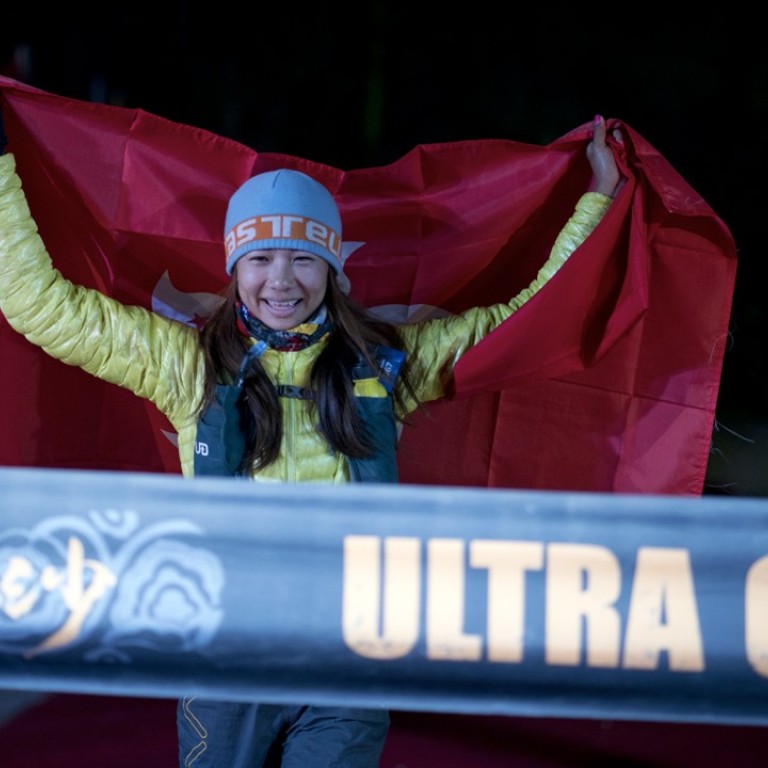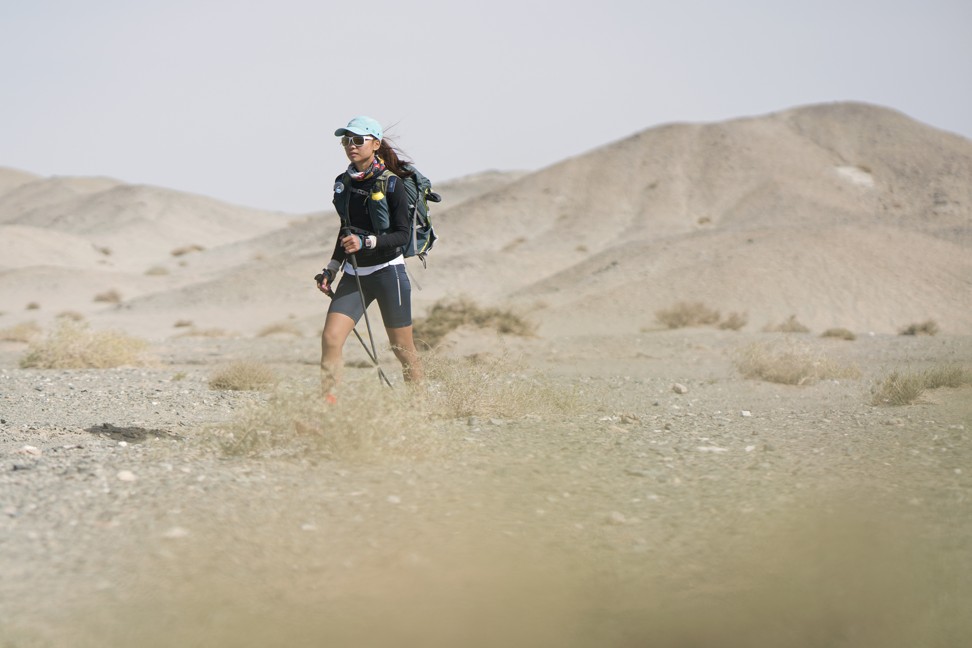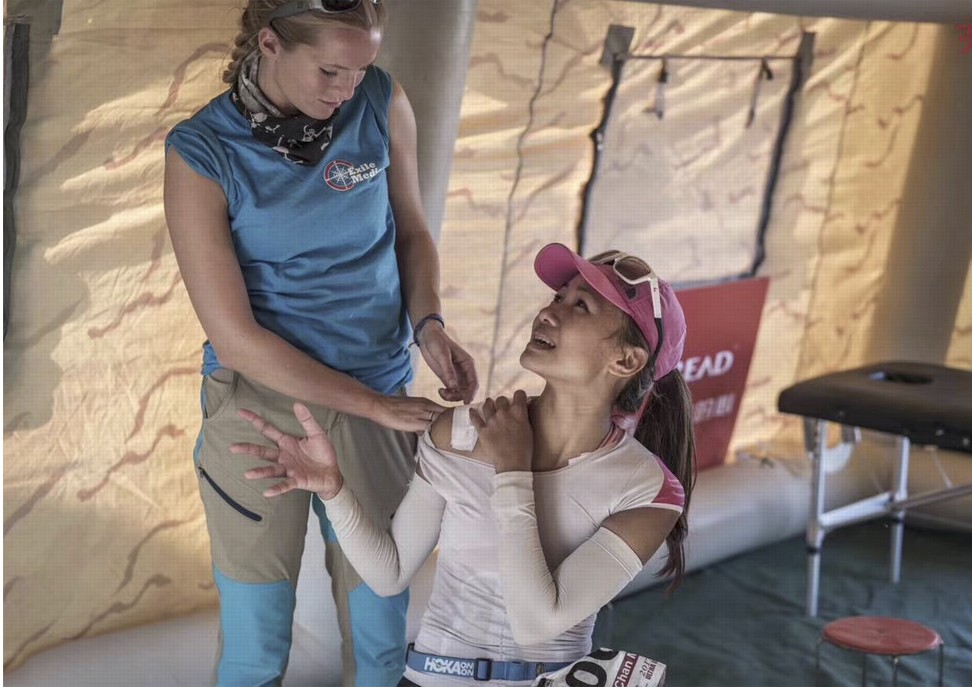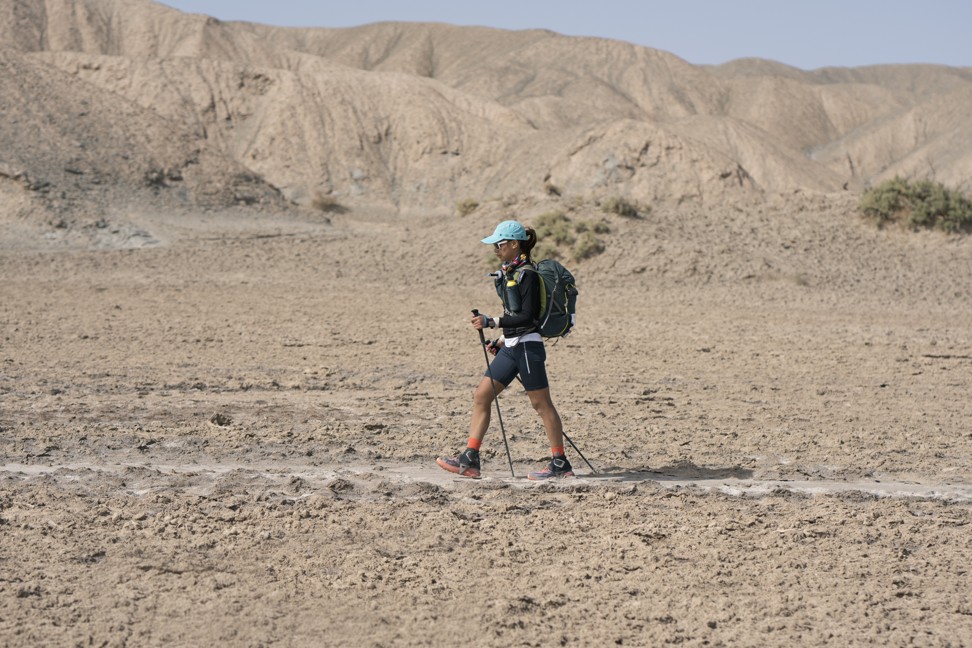
Hong Kong runner, third woman home in 400km Gobi Desert race, on how she conquered one of the world’s toughest challenges
‘Easier than I expected’ is Samantha Chan’s verdict on the Ultra Gobi race, in which she battled terrible foot pain, hunger and the howls of hyenas by thinking of her favourite foods
When she closes her eyes, Hong Kong ultra runner Samantha Chan still sees the desert. In her dreams, she is still navigating through the wilderness. It has been just over a week since this tough athlete completed a challenge that she had originally thought to be beyond her abilities – the non-stop, self-navigating Ultra Gobi race near Dunhuang, in China’s Gansu province.
Samantha Chan, ultrarunner from a Hong Kong housing estate whose modesty belies her achievements
Surprising herself, and many others, Chan was the third woman across the finish line, 15th overall in a field of 50. It took her almost 120 hours to complete the 400km trek across the vast stretch of Gobi Desert, criss-crossed by deep canyons and mountain chains.
All Chan’s greatest fears were realised – she had to negotiate some of the course’s hardest sections alone and at night, not during the day, as she had hoped. Her advance preparations, in particular, learning to use a global positioning system, paid off.
“I did go out of my comfort zone, but I relied on my navigation training. I somehow remained positive and blanked everything else out. It was easier than I expected,” she said.

Then there was a solo nocturnal encounter with a pair of hyenas. “I did not know what those weird animals were. They were making really scary, strange noises. I just thought – don’t come close, please. I don’t want to make friends with you.”
The last 40km were the greatest test, mentally and physically, but Chan passed with flying colours. “I was in a lot of pain. My feet hurt so much. The terrain was flat and featureless, endless. Then it became dark and I could only see one light in the distance, but after five hours I was still unable to reach it. This almost made me mad.”
Hong Kong’s Samantha Chan overcomes fear of getting lost in Gobi Desert to finish third in 400km race branded one of world’s toughest
She kept her sanity, though, to finally cross the finish line. After a day on crutches, her feet were almost back to “normal”. Chan is now back in Hong Kong, calling on friends to make good on promises to take her out for a meal – whatever food she wishes – for completing the race.
She admits, it was thinking of her favourite dishes that kept her mind off the pain, the hyenas and the long kilometres still to come.

Did you expect to come third?
No, I did not have any expectations, I just wanted to complete the race.
The elite girls were all racing each other, going hard from the start, but you just followed your own pace
Of course, I wanted to catch the girls ahead of me, but I did not do try to go faster because of that. I did my own thing, ran and walked, and rested and slept when I had to.
Adventurer aiming to tap into nomads’ knowledge in ‘daft’ mission to cross Gobi Desert in winter
Hong Kong runner Samantha Chan in fourth place and going strong 88km into the Ultra Gobi
Do you know the Chinese female competitors included some of the fastest ultra-runners in China?
I had no idea until very late in the race, when I started to talk to them. For example, Xiang Fuzhao (who dropped out after 280km due to injuries).
I am a city girl. How I look is important to me. But I am flexible, I can sleep equally well in a comfortable bed and also in a tent in the mountains
What was your race strategy?
Mixing running and walking, but at the end I got injured and so could only walk.
Some people relied for navigation on others who had done the race before and knew the course. Do you see this an unfair?
It is their choice. I could have done the same, but I chose to do my own thing, to trust my own navigation. If you do not rely on your own navigation, you don’t follow the spirit of Ultra Gobi.
Before the race, navigation, was something you were worried about the most, but in the race you were confident
It turned out to be quite easy, especially in the open desert.

When did the suffering start?
During the long climb up to 3,300 metres altitude, the highest point of the race, at about 250 kilometres. I made a mistake – I did not eat a full meal before the climb and I felt very weak. Then at 300 kilometres I had to start taking painkillers for my feet, and 30 kilometres later it got really serious, I had to take a heavy dose of painkillers which made me very drowsy.
At the 360km mark, it looked like it was all over for you – your feet were so swollen you could not get your shoes off
I never thought of giving up, I did not give myself this choice. It was either sleeping at the rest station for a bit and then continuing, or carrying on immediately.
When was the happiest moment during the race?
The beautiful sand dunes and the yardangs [land formations created by erosion] in the first light on the last day. I knew I was close to the finish, I just took a painkiller, the pain went away for a while. I felt privileged that I could see this scenery.
How Hong Kong runner in Ultra Gobi race, Samantha Chan, is preparing for gruelling non-stop 400km desert challenge
Did you spend a long time preparing for this race?
I spent two weeks preparing. I prepared lots of stuff that I did not need at the end. I was not fully fit, I already had foot injuries, so I tried my best to prepare to boost my chances.
What injuries did you have?
I went on a five-hour hike a week before the race and afterwards, for some reason, my feet swelled up and turned green. They were very painful, and I was very worried. Jack Morozov, a physio, helped me to minimise the problem. I considered pulling out of the race, but the flights were already booked. Then, three days before flying out, I got an ingrown toenail which got infected. I was lucky that a doctor who is an ultra runner, Chris Mak, gave me great advice and solved the problem.

You have a lot of supporters, but many people doubted that you could finish, let alone take a podium place
I think it is normal that some people thought I would not finish – I am not one of Hong Kong’s running stars. I posted a lot about this race on social media because it is what I am supposed to do as an invited athlete. I posted more than I normally do and so it looked like I was showing off. Actually, I don’t care what people think of me, I do whatever I like, and do what I am able to do.
The explosion in women’s racing in China, on road and trail, and the female-only clubs and events that cater to them
You have an urban chic image, yet you are prepared to rough it
I am a city girl. How I look is important to me. But I am flexible, I can sleep equally well in a comfortable bed and also in a tent in the mountains.
You managed to look glamorous in a 400km race, despite not washing for days
All the race staff and volunteers commented on that. I always combed my hair before sleeping and I did my skin care. And I prepared four different outfits to change into during the race.
Do you put effort in selecting what you wear for races?
I always pick the clothes that I like and that suit me, the colour and the cut. I balance and match colour, style and functionality. Actually, the reason that my preparation for the race can stress me out is that I spend a lot of time selecting outfits.

